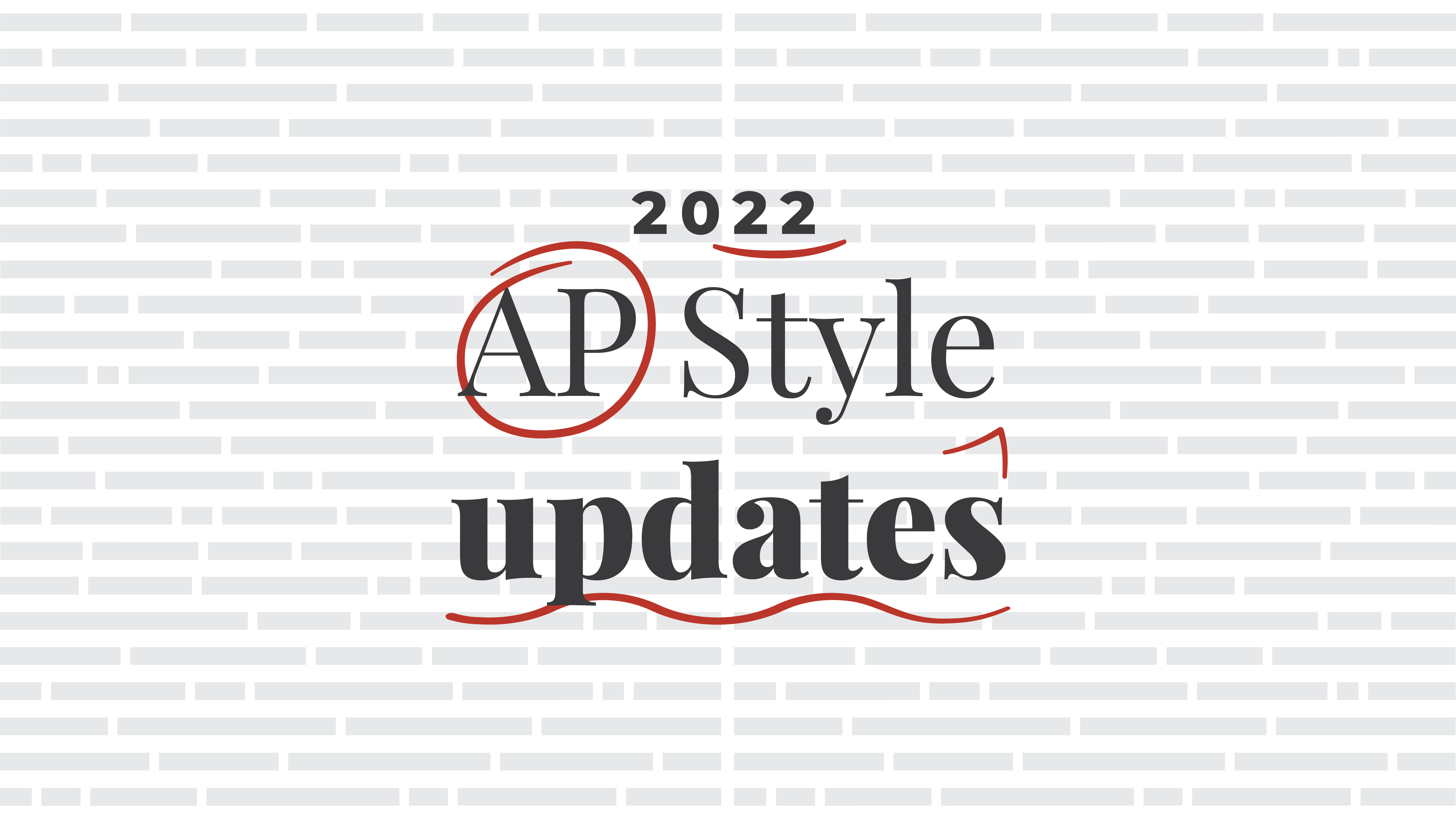Six Updates to the Associated Press Stylebook in 2022
Aug 22, 2022 Katharine Grant
Journalists, reporters, PR professionals and other communicators refer to AP Style, and the corresponding AP Stylebook, every day for the definitive guidelines for news and story writing.
AP Style is a guiding light for writers and editors to ensure their grammar, punctuation, spelling, language and style is consistent and current, but it can be overwhelming to keep up to date on the frequent changes. Especially when the most recent edition of the book (The AP Stylebook, 56th Edition) is more than 600 pages long!
The current edition was published in June 2022, and includes more than 300 new and revised entries since the 2020 edition. Additions and changes to the book reflect how the English language is evolving and account for cultural trends, shifts and events.
To save you time and get you writing faster, here’s an overview of some new and notable AP Stylebook updates.
**These tips are not comprehensive, so check out the AP Stylebook for the full 2022 guidelines.
1️⃣ Inclusive storytelling chapter
One of the main updates in the 2022 edition is a new chapter on inclusive storytelling. The Associated Press shares that inclusive storytelling “gives voice and visibility to those who have been missing or misrepresented in traditional narratives of both history and daily journalism.”
The chapter encourages communicators to expand their source pools, seek out different perspectives and reject tokenism and sweeping generalizations. The chapter also offers guidance on how to challenge different kinds of biases and be intentional about language, visuals and accessibility.
2️⃣ Disabilities
There are 35 new or revised disabilities-related entries in the 2022 edition. The overview section notes that disabilities “include a broad range of physical, psychological, developmental and intellectual conditions both visible and invisible.”
Because people with disabilities use diverse terms to describe themselves – (for example, people with disabilities and disabled people) – writers should try to determine the preference of a person or group before putting pen to paper. If this isn’t possible, the guide recommends using a mix of identity-first language and person-first language.
Here are some other tips from the section:
- Refer to a person’s disability only when relevant to the story
- Avoid writing that implies ableism
- Stay away from clichés as much as you can
- Nix language that suggests overt pity or wonder
3️⃣ Race-related coverage
The “race-related coverage” section includes new and revised guidance when reporting and writing about issues involving race. The overview states, “In all coverage — not just race-related coverage — strive to accurately represent the world, or a particular community, and its diversity through the people you quote and depict in all formats. Omissions and lack of inclusion can render people invisible.”
There are brand new entries since the last edition, including critical race theory, historically Black colleges and universities, Juneteenth and more, while other entries have been revised, like the guidance to not use Black(s) or white(s) as either a singular or plural noun. The Arab Americans and Native Americans sections have also been updated.
4️⃣ Immigration and migration
The “immigration, migration” section emphasizes that “language that is both neutral and accurate is essential in news coverage.” This section differentiates migrant versus immigrant, breaks down the agencies dealing with these matters and much more. There are also 20 new or revised individual entries, including sanctuaries and “Dreamers.”
5️⃣ Gender, sex and sexual orientation
As the renamed section called “gender, sex and sexual orientation” points out, language around gender is ever-evolving. That’s why this section has 25 new or revised entries to provide guidance around key details and terms like transgender, nonbinary, gender-fluidity, genderqueer and others.
The 2022 edition also advises writers to “use they/them/their as much as possible as a way of accurately describing a person who uses those pronouns for themself.”
LGBTQ is preferred over LGBT, and the section also discusses nuances around female as a descriptor for women. Deadnaming is appropriate only in rare cases.
6️⃣ Religion guidelines
The “religion guidelines” chapter has 30 new entries, including African Methodist Episcopal Church, Sikhism, humanism, “nones” and others.
The guidelines now advise against using Roman Catholic as a first reference when referring to the pope, the Vatican or the universal church; Catholic Church should be used instead. However, the chapter states: “Given the majority of Catholics belong to the Latin (Roman) rite, it is acceptable to use Roman Catholic Church on first reference if the context is clearly referring to the Latin rite.”
With more than 300 new and revised entries in the 56th edition, we can’t capture each and every change here (although we wish we could!).
For more details and other grouped or individual updates, check out the AP Stylebook’s homepage, follow their team on Twitter or visit our other AP Style resources.
Best of luck incorporating these tips into your future content pieces!






